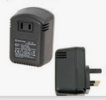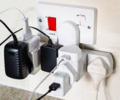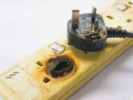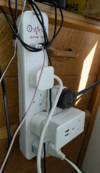Fair enough. However, if you essentially agree with mw, then you really ought also agree that all these discussions about plugging two 'high' loads into a double socket, and all the arguments about what is 'the rating' of such a socket, are probably unnecessary, essentially a 'red herring'.Yes John, I am happy to agree with that in the main, not so much in opposition .
Like, I suspect, most other people, I've never really thought very deeply about this but, now I have done, I am coming more and more to suspect that the socket is largely irrelevant - i.e. if a 13A plug carrying a fairly high current comes to thermal harm (with consequent thermal harm to the socket) when plugged into a double socket when something else is also plugged in, I suspect that, in most cases, the same plug serving the same 'high' load would probably come to similar thermal harm (and hence thermally harm the socket) even if it were plugged into a single socket
Kind Regards, John






